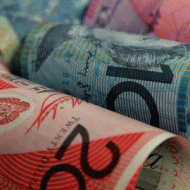A few months back I wrote a post about the $80 billion clean energy access opportunity from capturing remittance flows. I thought that was revolutionary given its scale and applicability (especially compared to mechanisms subject to the excruciating dynamics of the UNFCCC like the Green Fund). Now an even bigger, and far more advanced innovation in clean energy access finance has come along – and the $90 billion opportunity it presents is tremendous.
It’s called crowd funding, and it could catalyse clean energy across the developing world.
Crowd funding allows early-stage companies, or projects to “crowd in” finance from lots of small sources over the Internet (you could consider it democratizing finance in a way). A notable non-profit precursor is Kiva, which has helped raise more than $500 million to date (ironically the same amount energy access entrepreneurs requested, but did not get, from the World Bank at Rio+20).
With the passage of the US JOBS Act, crowd funding is now primed to move from a non-profit activity to a legitimate retail investment for the masses. Bloomberg estimates that if even 1 per cent of the retail investment market is captured the opportunity is worth $90 billion dollars – which has energy access entrepreneurs understandably quite excited.
So why is crowd funding so ideal for these entrepreneurs? Because the most effective means of delivering energy access is small scale, distributed clean energy. Crowd funding is a financing model that mirrors this scale and distribution. But far more importantly, it allows entrepreneurs to access funding that traditional institutions have thus far failed to provide.
At the end of the day what determines “bankability” (the ability to secure finance) is overwhelmingly perception. That’s why clean energy had such a hard time for so many years. Not because it wasn’t legit, but because it was new — and in the minds of risk averse, conventional bankers new = risky. That has changed for the global clean energy market (which is now over $260 billion), but the stigma remains for those focused on innovations in delivering clean energy to poor citizens around the world.
As Nathanial Bullard explains in a must read note from Bloomberg New Energy Finance, this is where the true “disruptive potential” of crowd funding lies: “Crowd funding…works in reverse – retail investors can determine which projects are brought to market” because “Crowd funded investors…demand qualitative information….[which] places a premium on empathy.” That’s right. People care about the poor having clean energy, so they make them bankable, traditional financiers be damned.
It’s just like what President Roosevelt did for the US as a part of the New Deal – by fiat he declared rural co-ops bankable by enabling the credit to flow and rural electrification to occur. It’s what our development finance institutions should do, but aren’t. Which is a tragedy, but in their absence the people will find a way.
This not only supports the democratisation of finance and determines what’s bankable, it does so based on values — not just returns. That’s a big step toward re-embedding markets within social structures and making governments work for people, not corporations. It’s also a rude wake up call for those who still blindly accept that markets, and by extension human beings, are motivated solely by money.
But as many young social entrepreneurs are figuring out, there doesn’t need to be a conflict between doing good and making money. Crowd funding will not only deliver energy access, it will also offer steady returns. Not spectacular returns based on exotic derivatives that destroy the global economy, but steady returns that rival standard investments available today.
There are of course limitations. Even if substantial amounts are raised via some of the most exciting startups like Sunfunder and Solar Mosaic, this market will still likely require insurance products and a secondary market. This means we will still need conventional financial institutions to get their acts together. But if even a fraction of the $90 billion dollar annual potential is unleashed it’s hard to believe financial institutions will sit on the sidelines.
Considering their track record I’m not holding my breath. Instead, my money’s going to crowd funding because I want to get the job done.
Justin Guay is head of the Sierra Club’s International Program. This piece was originally published at the Sierra Club and was reprinted with permission.












